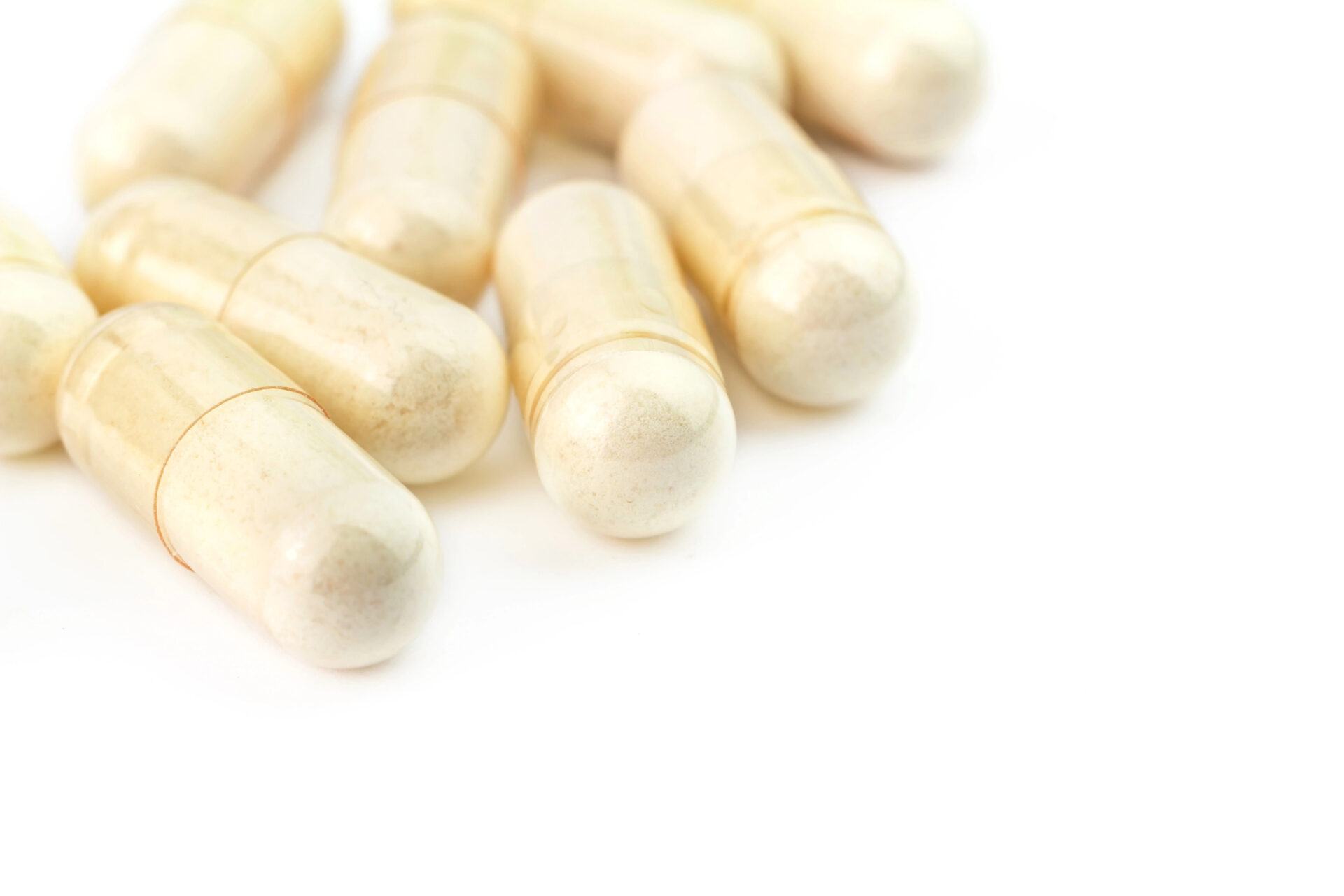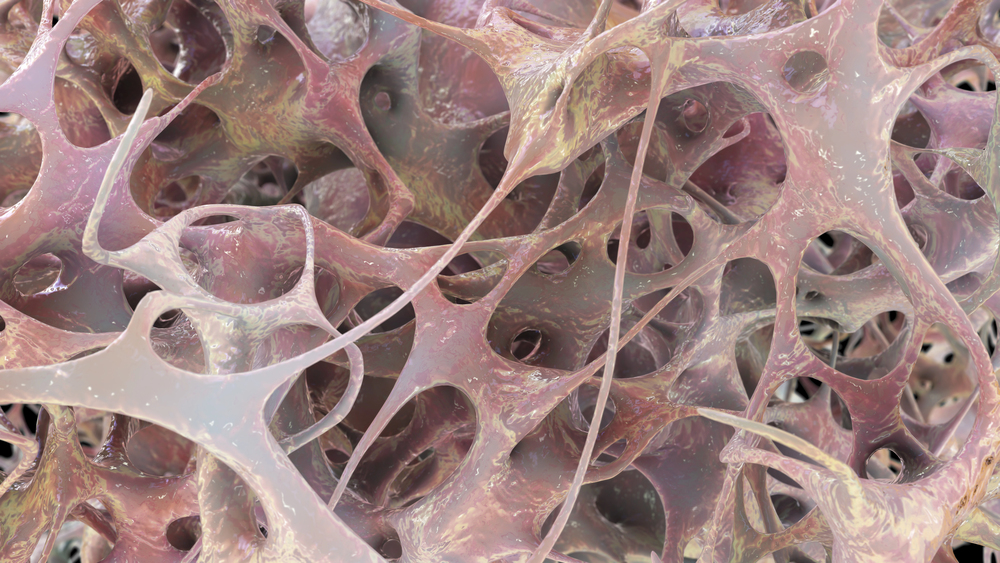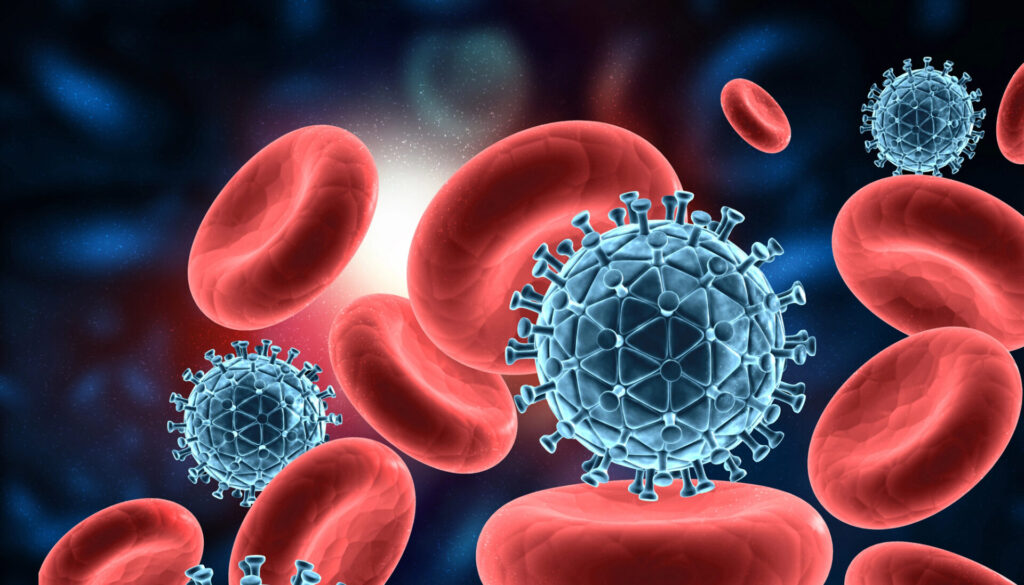Bone is a metabolically active tissue in a continuous remodeling process throughout life. A delicate balance between osteoclastic bone resorption and osteoblastic bone formation is critical to maintaining bone structure and mass. It’s important that one does not outpace the other.
There are three components to bone: fortifying minerals (calcium and phosphate), cells (osteoblasts, osteoclasts), and the collagen matrix (collagen backbone with BMPs).8 BMPs signal mesenchymal stem cells to differentiate into osteoblasts to build bone. BMPs are critical for the maintenance of skeletal integrity and in the healing of fractures.2
A good analogy to understand bone and how supplements impact its structure is to imagine a chain-linked fence. The fence is the scaffolding and can hold objects like a tennis ball, for example, in the holes of the fence. If there is a large hole cut into the fence, the tennis ball will not stick. The fence is like bone collagen matrix, and the tennis ball represents minerals like calcium hydroxyapatite that fortify bone. If the bone collagen matrix is worn away, there is no place for the minerals to “stick”.
Fortifying minerals can “stick” in between the spaces of normal bone, but not osteoporotic bone. In osteoporosis, the disconnected bone is measured as bone mass, but is weaker and prone to fracture.8
Giving calcium supplements cannot build new bone, but it can only fortify existing bone tissue – if it has a place to “stick”. Bisphosphonates like alendronate (Fosamax) reduce osteoclastic bone turnover, so bone formation exceeds bone resorption, but it ultimately does not build new bone nor new bone tissue. It also has risks for gastrointestinal issues, musculoskeletal pain, headaches, and rarely osteonecrosis of the jaw.9 Estrogen conserves bone by reducing osteoclastic activity.10,11 These therapies help preserve existing bone, but do not stimulate new bone growth like BMPs.
BMPs and Cartilage Repair
Articular cartilage is composed of cells (chondrocytes) and an extracellular matrix of water, collagen, proteoglycans, and other noncollagenous proteins and glycoproteins.12 Cartilage erosion and inflammation are hallmarks of osteoarthritis (OA). BMPs initiate mesenchymal stem cell differentiation into chondrocytes for cartilage repair, induce proteoglycan synthesis, and reduce inflammation in joints and other tissues.2,13-16 Recent research highlights that BMP expression is decreased in synovial tissue of patients with OA and rheumatoid arthritis (RA),17,18 changing our understanding in the pathogenesis of these conditions.
Over time, joints experience wear and tear, causing many patients to reach for nonsteroidal anti-inflammatory drugs (NSAIDs) and supplements like glucosamine and chondroitin to preserve their ability to remain active. NSAIDs have shown limited effectiveness for osteoarthritis pain and have side effects, including GI symptoms, internal bleeding, and kidney damage. Clinical trials using glucosamine and chondroitin sulfate show mixed results.13 Similar to the chain-link fence analogy for bone, proteoglycans like glucosamine and chondroitin will not work unless chondrocytes are there to absorb them. BMPs stimulate mesenchymal stem cells and differentiate them into chondrocytes to repair damaged cartilage.
BMPs in Surgery
Isolating individual BMPs from tissue for surgical use is a complex and labor-intensive process, especially given the high doses required. As a result, recombinant BMPs are used for orthopedic applications.2 Currently, BMP-2, is an FDA-approved recombinant protein for open tibial shaft fractures and anterior fusion of the lumbar spine in patients with degenerative disc disease. BMP-2 is known to have serious side effects, underscoring the need to develop safer therapies for bone regeneration.1
BMPs 2, 4, 6, 7, and 9 exhibit strong osteoinductive properties and are actively being studied as injectables by pharmaceutical companies for their therapeutic potential.19 BMP-9 shows promise for bone regeneration, especially in rheumatoid arthritis, and presents a safer alternative to BMP-2.6 BMPs in surgery are used in combination with other agents such as bisphosphonates to retain newly formed bone.19
Related:

Oral BMP Complex: A Novel Nutraceutical Approach to Bone and Joint Regeneration





